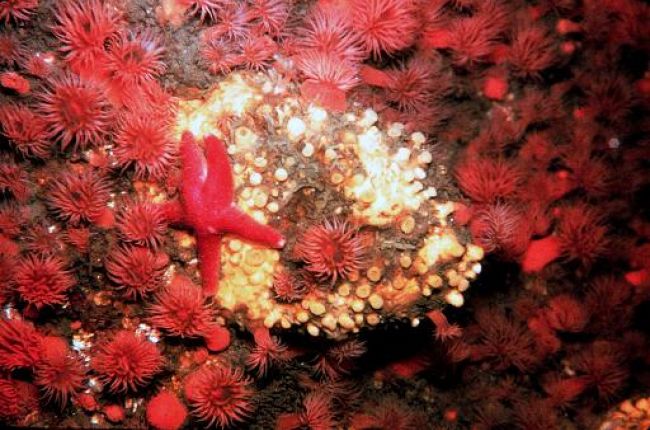
Every plant or animal belongs to a species. A species is a population of plants or animals that can breed to produce offspring that can then produce offspring themselves. Biologists believe that new species evolve from existing species by a process called natural selection. Here's how it works. Genes are chemical structures in the cells of the organism. The nature of the organism is determined by its genes. The organism inherits the genes from its parents. Occasionally a gene changes accidentally. That's called a mutation. The changed gene is passed on to the next generation. Most mutations are bad, but some of them make the organism more successful in its life. Organisms that inherit that favorable new gene are likely to become more abundant than others of the species.
Sometimes the population of a species becomes separated into two areas, by geography or by climate. Then the two groups no longer breed with each other. The two groups then slowly change by natural selection. Each group changes in different ways. Eventually, the two groups are so different that they can't breed to produce offspring any more. They have become two different species. Species eventually become extinct. That means that the population gets smaller and smaller, until no more organisms of that species are left alive. Species become extinct for various reasons. If the environment changes too fast, the species might not be able to adapt fast enough. Also, a new species might evolve to compete with an existing species. Biologists are sure that once a species becomes extinct it never appears again.
In the modern world, biologists can identify species by seeing whether the organisms can breed with one another. Paleontologists have much more trouble with fossil species, because the organisms are no longer around to breed! All that can be done is to match up shells or imprints that look almost identical and then assume that they represent a species.
Paleontologists are sure that the fossil record is biased. That means that some kinds of organisms are much scarcer as fossils than they were when they were alive. Other kinds of organisms are much better represented by fossils. Animals with hard shells and skeletons are represented well in the fossil record. On the other hand, soft-bodied animals are probably represented very poorly. It's likely that most soft-bodied species that ever existed are gone forever without a trace. Land animals are probably very poorly represented as well. For example, most animals that are now alive, or ever have lived, are insects, but the fossil record of insects is poor.





